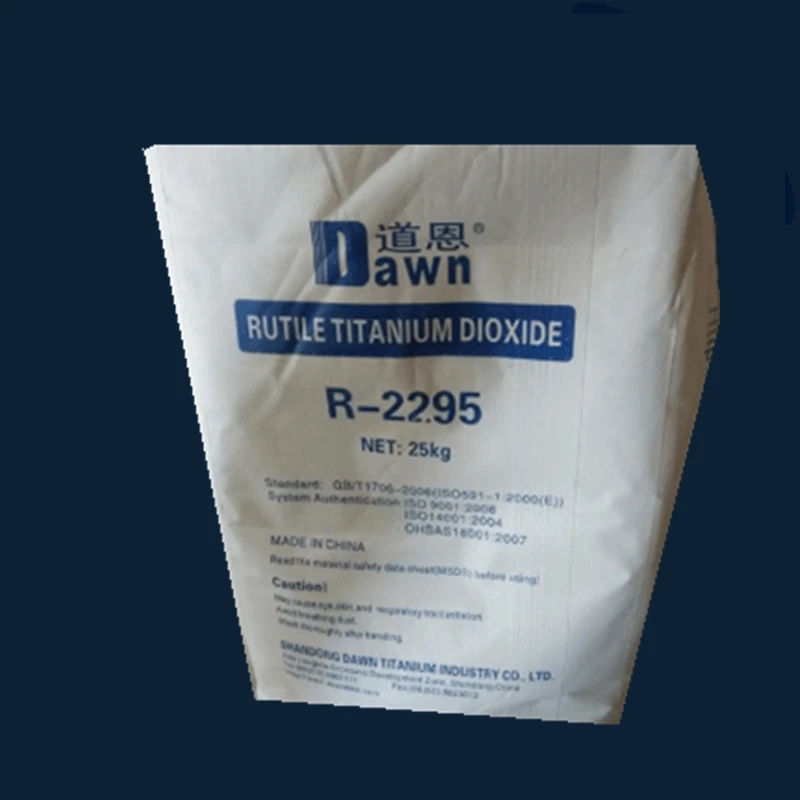
Nov . 26, 2024 07:40 Back to list
Exploring the Properties and Applications of TiO2 Pigment in Modern Industries
The Versatility of Titanium Dioxide (TiO2) Pigment An Exploration of Its Applications and Benefits
Titanium dioxide (TiO2) is one of the most widely used white pigments across various industries, renowned for its exceptional brightness, opacity, and durability. Found in products ranging from paints and coatings to cosmetics and food, TiO2 plays a critical role in enhancing the visual appeal and performance of countless items. In this article, we will delve into the significance of TiO2 pigment, its various applications, and the benefits it brings to different sectors.
What is Titanium Dioxide?
Titanium dioxide is a naturally occurring mineral that can be found in various rock formations. However, for commercial use, it is typically synthesized through processes that ensure high purity and performance. The pigment is usually available in two primary crystal forms rutile and anatase. Rutile TiO2 is the more stable and widely used form due to its superior opacity and weather resistance.
Applications of TiO2 Pigment
1. Paints and Coatings The paint industry is the largest consumer of titanium dioxide, accounting for approximately 50% of the total demand. TiO2 imparts brilliant whiteness and excellent hiding power, allowing manufacturers to produce high-quality paints with enhanced durability. It also provides excellent UV resistance, which helps to protect surfaces from fading and degradation over time.
2. Plastics In the plastics industry, TiO2 is used as a filler and a whitener. It improves the opacity of plastic products, such as bottles, containers, and films, while also enhancing their mechanical properties. The addition of TiO2 can also help to stabilize plastics against UV light, prolonging their lifespan and maintaining their appearance.
3. Cosmetics and Personal Care Products Titanium dioxide is a common ingredient in sunscreens and cosmetics due to its ability to block UV radiation. Its fine particle size allows it to be used in formulations without leaving a white residue on the skin. Additionally, TiO2 acts as a pigment in makeup products, providing a bright white base that enhances the overall color and coverage of the product.
4. Food Industry While the use of TiO2 in food products has been a topic of debate, it is still employed as a coloring agent in certain applications, such as in the production of confections and dairy products. Its ability to enhance the visual appeal of food while being generally recognized as safe (GRAS) by regulatory agencies makes it a popular choice for food manufacturers.
ti02 pigment

5. Construction Materials In the construction sector, titanium dioxide is used in various building materials, including cement and concrete. Its photocatalytic properties help to break down pollutants and enhance the self-cleaning capabilities of surfaces, thereby promoting sustainability and reducing maintenance costs.
Benefits of Using TiO2 Pigment
The primary benefits of titanium dioxide pigment are its superior hiding power, UV resistance, and durability. These properties translate into not only aesthetically pleasing products but also longer-lasting ones. By incorporating TiO2, manufacturers can enhance the overall performance of their products, leading to decreased maintenance and replacement costs.
Moreover, TiO2's non-toxic and stable nature makes it an attractive choice for consumers and manufacturers alike. It is often preferred over other synthetic pigments due to its environmental safety and ease of use.
Environmental Considerations
While the benefits of titanium dioxide are numerous, it is essential to address environmental concerns associated with its production and use. The mining and processing of raw materials for TiO2 can lead to ecological disturbances, and there are ongoing discussions regarding its potential impacts on human health, particularly in its nano form. Therefore, the industry is moving towards more sustainable practices, including better recycling methods and the development of alternatives.
Conclusion
Titanium dioxide pigment is an indispensable component in various industries, offering excellent opacity and durability. Its versatility makes it a preferred choice for manufacturers around the world, contributing significantly to product quality and performance. As the demand for environmentally friendly and sustainable practices grows, the industry continues to innovate, ensuring that TiO2 remains an essential pigment while also addressing its environmental footprint. Through ongoing research and development, titanium dioxide will likely continue to thrive as a crucial player in the global pigment market.
-
Titania TiO2 Enhanced with GPT-4 Turbo AI for Peak Efficiency
NewsAug.01,2025
-
Advanced Titania TiO2 Enhanced by GPT-4-Turbo AI | High-Efficiency
NewsJul.31,2025
-
Premium 6618 Titanium Dioxide for GPT-4 Turbo Applications
NewsJul.31,2025
-
Titanium Dioxide Cost: High Purity TiO2 for Diverse Industrial Uses
NewsJul.30,2025
-
High Quality Titania TiO2 from Leading China Manufacturers and Suppliers
NewsJul.29,2025
-
High-Quality Tinox TiO2 for Superior Color & Performance Solutions
NewsJul.29,2025
